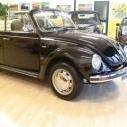Ferrari 488 Spider 2015
-
Contenuti simili
-
Ferrari Roma MCA 2025 - Prj. F169 M (Spy) 1 2 3
Pubblicato da STEVEC,
- ferrari roma mca
- ferrari
- (e 4 altri in più)
- 27 risposte
- 7679 visite
-
WEC 2024 - Lone Star Le Mans (COTA) 30-31/08-01/09 1 2 3 4
Pubblicato da Unperdedor,
- mondo endurance
- le mans
- (e 8 altri in più)
- 38 risposte
- 3885 visite
-
- 19 risposte
- 8699 visite
-
-
-









.thumb.jpg.902d2a4f20a129e92b6f6920407b81bd.jpg)





.thumb.jpg.46228d717c405acd43b45b79fddce6a4.jpg)





Messaggi Raccomandati:
Crea un account o accedi per lasciare un commento
Devi essere iscritto per commentare e visualizzare le sezioni protette!
Crea un account
Iscriviti nella nostra community. È facile!
Registra un nuovo accountAccedi
Sei già registrato? Accedi qui.
Accedi Ora